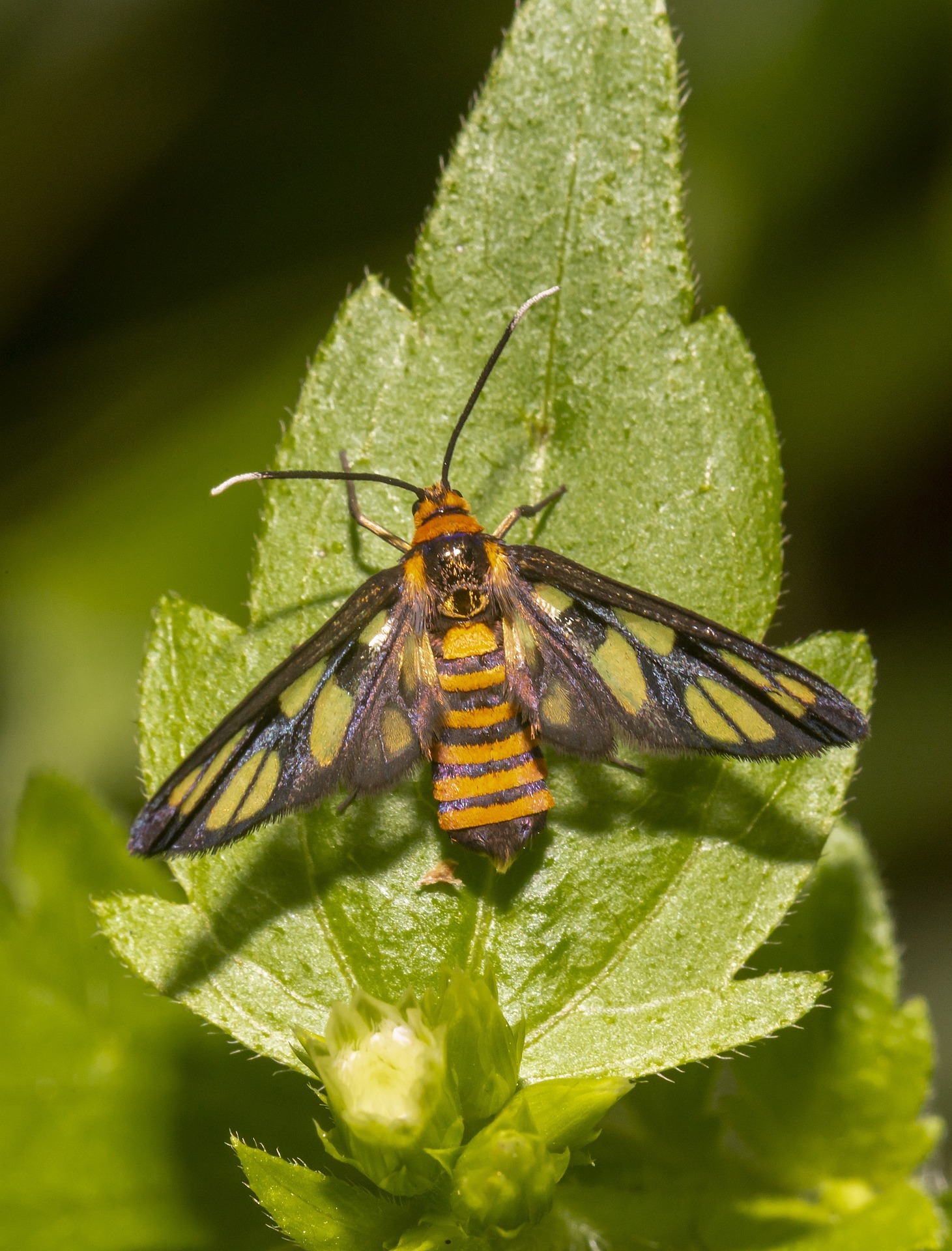Hübner’s wasp moth (Euchromia hübneri), also known as the Hübner’s wasp moth, is a colorful and striking species of moth that mimics the appearance of a wasp. Here is an overview of this fascinating insect:
Appearance
- Size: The wingspan of an adult Hübner’s wasp moth ranges from 30 to 40 millimeters.
- Coloration: This moth exhibits a bright and bold coloration that includes black, blue, and orange or yellow patterns. Its body and wings are typically black with distinctive blue bands and orange or yellow markings.
- Mimicry: The moth’s appearance closely resembles that of a wasp, which helps protect it from predators. This form of mimicry is known as Batesian mimicry, where a harmless species mimics the warning signals of a harmful one to avoid predation.
- Antennae: The antennae are thin and filamentous, typical of moths.
Habitat
- Preferred Habitats: Hübner’s wasp moths are typically found in tropical and subtropical regions. They inhabit forests, gardens, and areas with abundant flowering plants.
- Geographic Range: This species is widely distributed across parts of Southeast Asia, including countries such as India, Sri Lanka, Thailand, Malaysia, and Indonesia.
Behavior
- Feeding: Adult moths feed on nectar from flowers, using their proboscis to extract it. They are often seen visiting a variety of flowering plants.
- Larval Host Plants: The larvae of Hübner’s wasp moth feed on specific host plants, which are typically members of the Convolvulaceae family, such as morning glories (Ipomoea species).
- Activity: These moths are primarily diurnal, meaning they are active during the day. Their bright coloration and mimicry of wasps are particularly effective during daylight hours.
Ecological Role
- Pollination: As nectar feeders, adult moths play a role in pollinating the flowers they visit, contributing to the health and reproduction of flowering plants.
- Prey and Predators: The wasp-like appearance helps deter predators, reducing the likelihood of being eaten.
Interesting Facts
- Mimicry and Defense: The mimicry of wasps is a remarkable adaptation that provides protection. Predators that avoid stinging wasps are also likely to avoid these moths, even though they are harmless.
- Diverse Patterns: While the general coloration and patterns are consistent, there can be some variation in the intensity and exact distribution of colors among individuals.
Identification Tips
- Bright Colors and Patterns: The combination of black, blue, and orange or yellow with a wasp-like pattern is key to identifying Hübner’s wasp moth.
- Daytime Activity: Spotting these moths during the day, especially around flowers, can help in identification.
- Flight and Behavior: Their behavior and flight pattern may also mimic that of wasps, adding to the effectiveness of their mimicry.
In summary, Hübner’s wasp moth (Euchromia hübneri) is a visually striking moth known for its wasp-like appearance, which serves as an effective defense mechanism. Found in tropical and subtropical regions of Southeast Asia, these moths play a role in pollination and exhibit fascinating behaviors that make them a subject of interest for both entomologists and nature enthusiasts.
Visited 1,051 times, 5 visit(s) today
Views: 1437
Subscribe to the newsletter:
